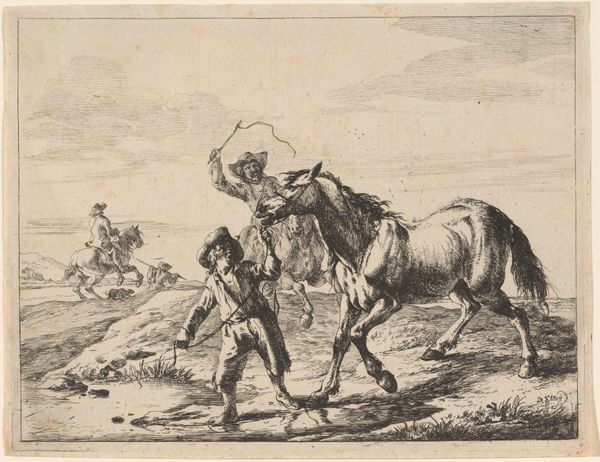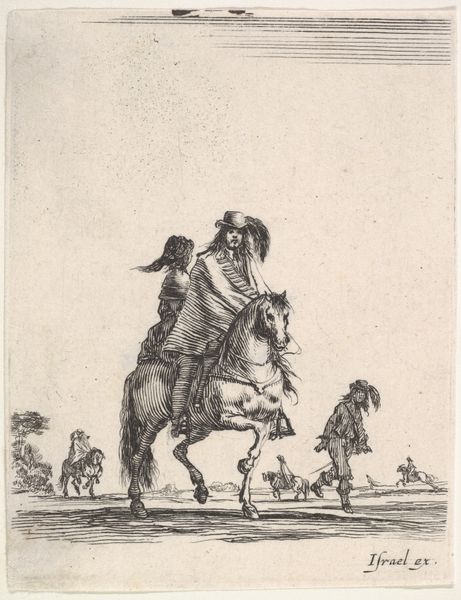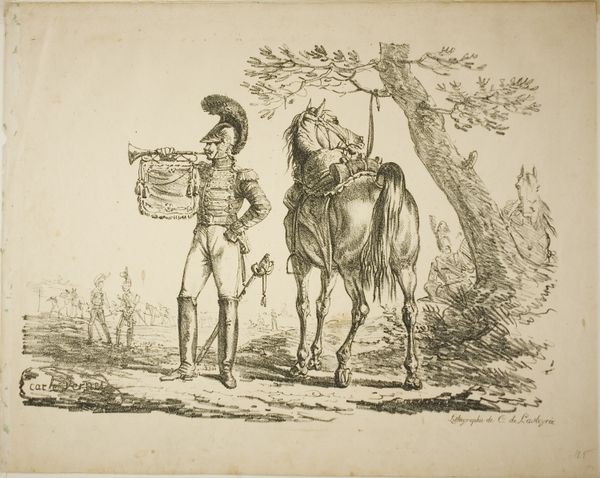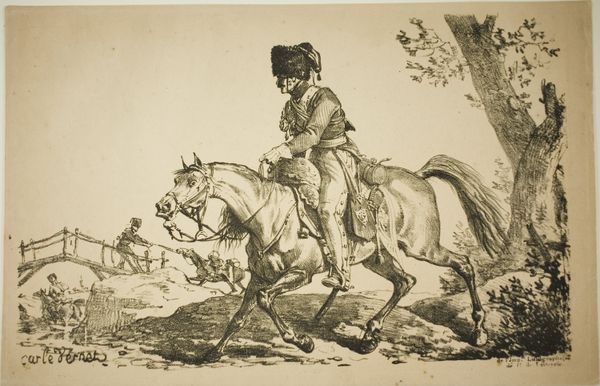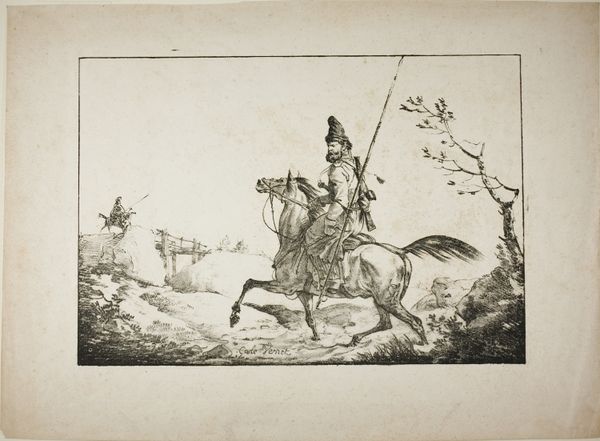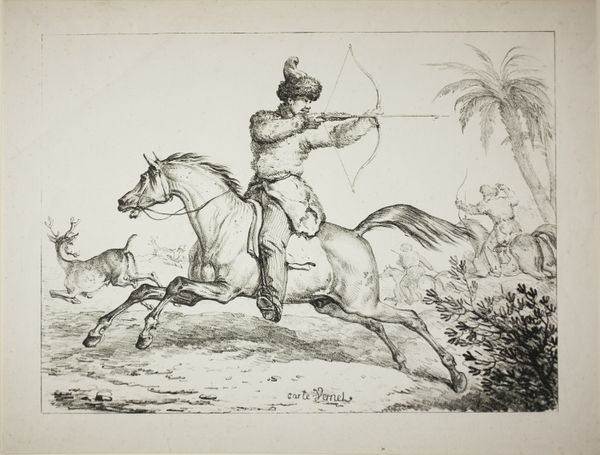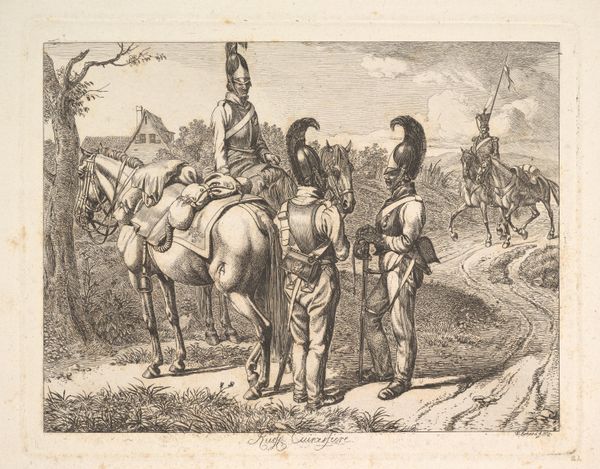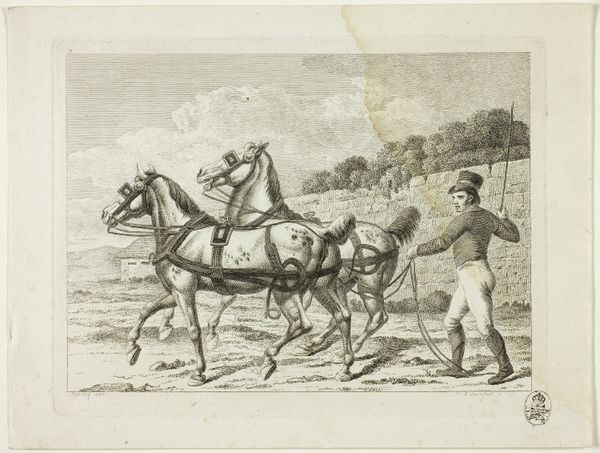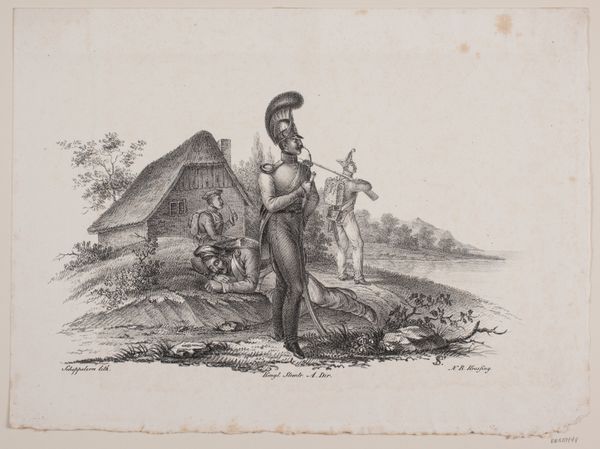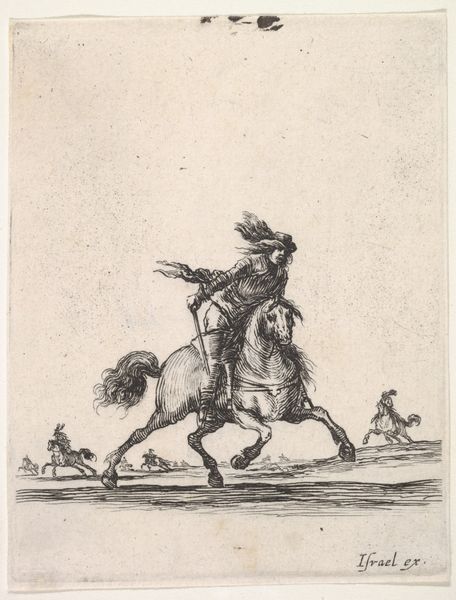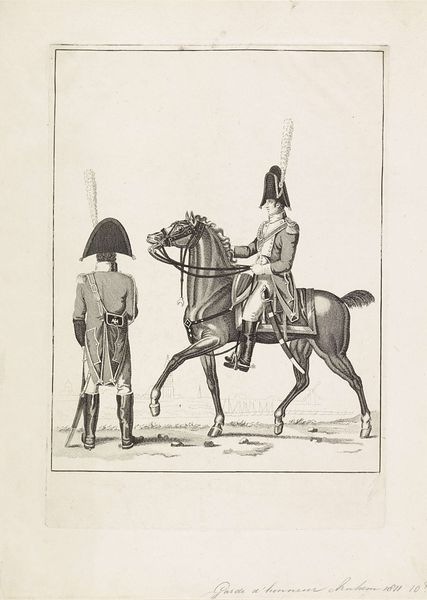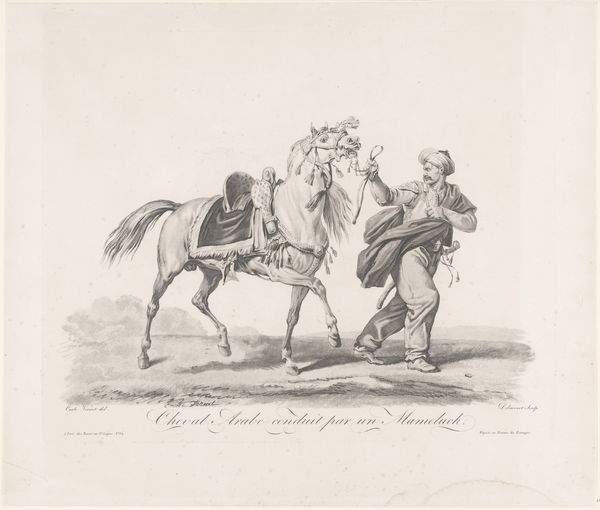
Cuirassier on Foot Holding back his Rearing Horse 20 - 1817
0:00
0:00
drawing, lithograph, print, paper
#
drawing
#
light pencil work
#
ink drawing
#
lithograph
# print
#
pencil sketch
#
paper
#
personal sketchbook
#
ink drawing experimentation
#
pen-ink sketch
#
france
#
sketchbook drawing
#
pencil work
#
sketchbook art
#
fantasy sketch
Dimensions: 207 × 305 mm (image); 267 × 388 mm (sheet)
Copyright: Public Domain
Curator: Here we have Carle Vernet’s "Cuirassier on Foot Holding back his Rearing Horse," dating to around 1816-1817. It’s currently residing at the Art Institute of Chicago, and it is a lithograph printed on paper. Editor: It’s certainly dynamic! The way the horse rears up—you can feel its raw power, its resistance. I find myself immediately drawn to the relationship depicted, that tension, between man and beast. Curator: Indeed. Vernet was known for his depictions of horses and military life, especially during the Napoleonic era. His works provide valuable insight into the romanticism surrounding military campaigns and equestrian prowess in early 19th-century France. Looking at it now, it speaks volumes about the relationship of the French identity as conquerors to their national identity. Editor: Yes, but it is so much more layered. I am interested in the very tangible implications that control plays. Is this not just a moment of control and resistance frozen in time? A clear reference to the structures of power operating within 19th-century French society. Is this dynamic really one of master over beast, of nation over identity, or of self over state? Curator: That’s a provocative interpretation, framing it through a lens of individual agency versus systemic power. While the composition clearly shows the cuirassier dominating the animal through force, one cannot ignore how this symbolism mirrors the relationship between the individual and the state in a post-revolutionary era struggling with authoritarian legacies. The tight control over nature can be read as society itself. Editor: Absolutely. This work begs us to consider not only the aesthetics but also the politics and cultural contexts that have contributed to its creation and reception. I can not overlook that for the creation of society to persist the self is inherently controlled by a governing body. Curator: These sketches by Vernet provide us today a window into France during times of change, while also demonstrating, as you indicated, that societal power constructs are often visualized as a negotiation between opposing sides in a political sphere, regardless of time. Editor: Exactly. This is what makes art endlessly interesting – we are able to consider social commentaries, which in turn, contribute to contemporary discussions around representation, and the nature of power itself.
Comments
No comments
Be the first to comment and join the conversation on the ultimate creative platform.
